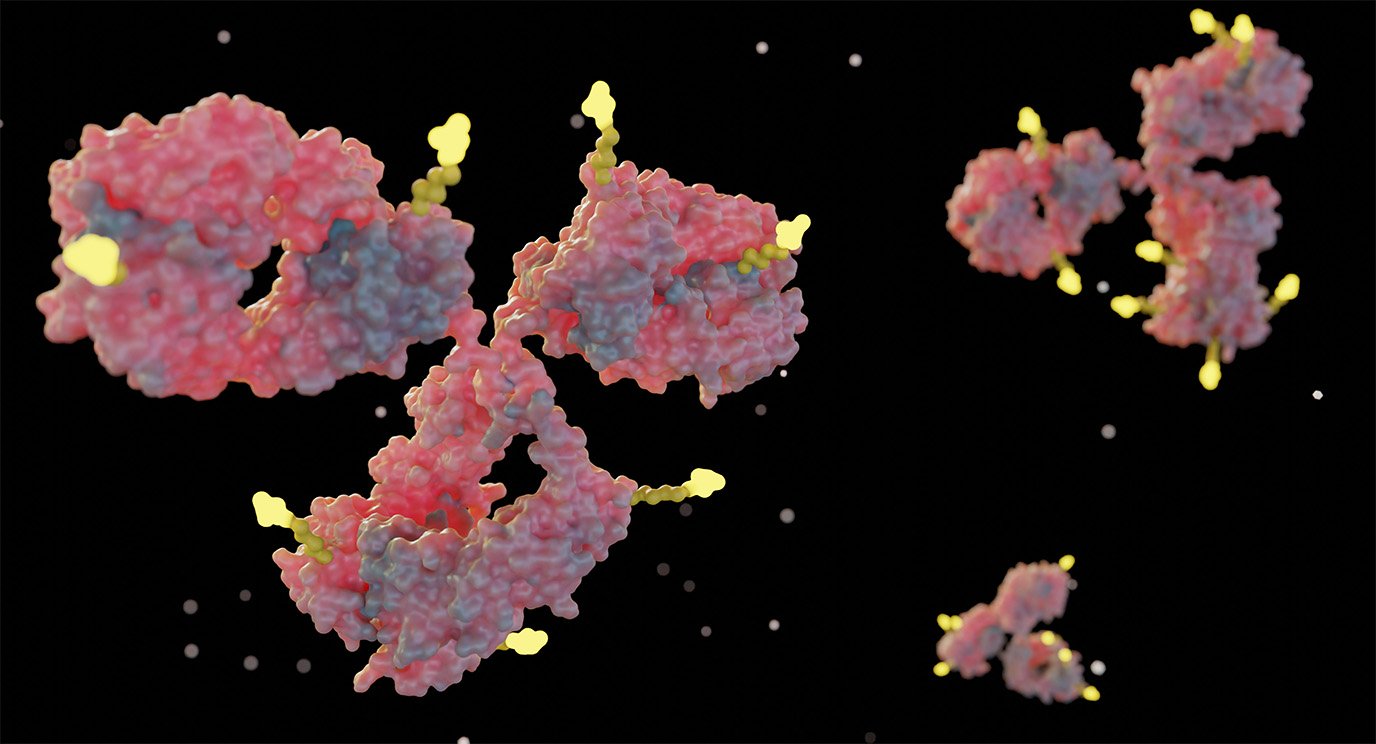- Diseases
- Acoustic Neuroma (14)
- Adrenal Gland Tumor (24)
- Anal Cancer (68)
- Anemia (2)
- Appendix Cancer (16)
- Bile Duct Cancer (26)
- Bladder Cancer (72)
- Brain Metastases (28)
- Brain Tumor (232)
- Breast Cancer (714)
- Breast Implant-Associated Anaplastic Large Cell Lymphoma (2)
- Cancer of Unknown Primary (4)
- Carcinoid Tumor (8)
- Cervical Cancer (158)
- Colon Cancer (166)
- Colorectal Cancer (116)
- Endocrine Tumor (4)
- Esophageal Cancer (44)
- Eye Cancer (36)
- Fallopian Tube Cancer (8)
- Germ Cell Tumor (4)
- Gestational Trophoblastic Disease (2)
- Head and Neck Cancer (12)
- Kidney Cancer (128)
- Leukemia (342)
- Liver Cancer (50)
- Lung Cancer (286)
- Lymphoma (278)
- Mesothelioma (14)
- Metastasis (30)
- Multiple Myeloma (100)
- Myelodysplastic Syndrome (60)
- Myeloproliferative Neoplasm (4)
- Neuroendocrine Tumors (16)
- Oral Cancer (100)
- Ovarian Cancer (172)
- Pancreatic Cancer (160)
- Parathyroid Disease (2)
- Penile Cancer (14)
- Pituitary Tumor (6)
- Prostate Cancer (146)
- Rectal Cancer (58)
- Renal Medullary Carcinoma (6)
- Salivary Gland Cancer (14)
- Sarcoma (238)
- Skin Cancer (296)
- Skull Base Tumors (56)
- Spinal Tumor (12)
- Stomach Cancer (64)
- Testicular Cancer (28)
- Throat Cancer (92)
- Thymoma (6)
- Thyroid Cancer (96)
- Tonsil Cancer (30)
- Uterine Cancer (80)
- Vaginal Cancer (16)
- Vulvar Cancer (20)
- Cancer Topic
- Adolescent and Young Adult Cancer Issues (20)
- Advance Care Planning (10)
- Biostatistics (2)
- Blood Donation (18)
- Bone Health (8)
- COVID-19 (362)
- Cancer Recurrence (120)
- Childhood Cancer Issues (120)
- Clinical Trials (630)
- Complementary Integrative Medicine (22)
- Cytogenetics (2)
- DNA Methylation (4)
- Diagnosis (232)
- Epigenetics (6)
- Fertility (62)
- Follow-up Guidelines (2)
- Health Disparities (14)
- Hereditary Cancer Syndromes (126)
- Immunology (18)
- Li-Fraumeni Syndrome (8)
- Mental Health (116)
- Molecular Diagnostics (8)
- Pain Management (62)
- Palliative Care (8)
- Pathology (10)
- Physical Therapy (18)
- Pregnancy (18)
- Prevention (914)
- Research (392)
- Second Opinion (74)
- Sexuality (16)
- Side Effects (604)
- Sleep Disorders (10)
- Stem Cell Transplantation Cellular Therapy (216)
- Support (402)
- Survivorship (320)
- Symptoms (182)
- Treatment (1786)
Central nervous system (CNS) lymphoma: What you need to know
5 minute read | Published August 28, 2023
Medically Reviewed | Last reviewed by an MD Anderson Cancer Center medical professional on August 28, 2023
Central nervous system lymphoma, or CNS lymphoma, is an aggressive, rare subtype of non-Hodgkin lymphoma. It most often occurs when cancerous cells form in the lymph tissue of the brain and/or spinal cord.
To learn more about central nervous system lymphoma, we spoke with Jason Westin, M.D., director of our Lymphoma Clinical Research Program.
Where does CNS lymphoma occur within the body?
It’s more common to see CNS lymphoma in the brain than in the spine, but sometimes it can be found in both. CNS lymphoma can be located only in the spine, but it’s extremely rare. Additionally, this lymphoma can occasionally be found in the fluid that surrounds the brain and spine.
Primary CNS lymphoma occurs when cancer starts within the central nervous system and there’s no prior history of lymphoma anywhere else in the body. If lymphoma was found initially somewhere else in the body as well as in the central nervous system, it’s considered the second incidence of lymphoma, or secondary CNS lymphoma.
What are common symptoms of CNS lymphoma?
Common first signs of primary CNS lymphoma could include a lesion in the brain, along with one or more of the following:
- confusion
- weakness
- difficulty speaking
- headaches
Secondary CNS lymphoma symptoms are similar. If a person is diagnosed with lymphoma and develops new symptoms related to their brain or spine, that could be related to lymphoma. If someone was diagnosed and treated for lymphoma previously and now has a brain lesion that a biopsy revealed to be lymphoma, it’s considered a secondary CNS lymphoma.
How is CNS lymphoma diagnosed?
There are three main types of tests used to help diagnose CNS lymphoma: imaging, biopsy and lumbar puncture.
- Imaging: This can include a CT scan or MRI. An MRI is usually preferred because it provides higher resolution, allowing a doctor to see more of the anatomy of the brain and identify differences between normal tissue and something abnormal. Often, imaging just suggests that there is a problem or suspicion of cancer. Because an MRI can detect other things in the brain that may look similar to lymphoma, doctors need additional testing to confirm cancer.
- Biopsy: Performing a biopsy on the brain can be difficult, depending on where the lesion is located. But a biopsy is critical to allow pathologists to determine if it’s cancer. The biopsy results eliminate uncertainty, which allows the doctor to provide a diagnosis confidently.
- Lumbar puncture: During this procedure, also known as a spinal tap, a needle is inserted into the lower back to collect fluid samples below where the spinal cord ends. This is the same fluid that bathes the spine and brain. A lumbar puncture is commonly used to see if there is evidence of cancer cells in the fluid. In some cases, it can be used instead of a biopsy.
What causes CNS lymphoma?
Uncontrolled HIV infection can increase the chances of developing CNS lymphoma, but more effective HIV therapies have made this less of an issue recently.
The risk for CNS lymphoma increases if a person has a suppressed immune system due to other autoimmune conditions or viruses, such as Epstein-Barr virus.
Scientists don’t yet know the cause of CNS lymphoma, so there aren’t any actions you can take to avoid developing it. However, it does not appear to be hereditary. That means you don’t have to worry about getting it from a relative; it’s more sporadic.
How is CNS lymphoma treated?
One challenge of treating CNS lymphoma is the blood-brain barrier, which protects our brain from potentially harmful chemicals.
Initial treatment for CNS lymphoma is usually the chemotherapy drug methotrexate. Its chemical structure enables it to get past the blood-brain barrier.
Radiation therapy can also be used to treat CNS lymphoma as an additional treatment beyond chemotherapy, or as a backup treatment if chemotherapy doesn’t work. At MD Anderson, doctors use sophisticated techniques to target radiation therapy precisely and converge on the intended point. Essentially, a patient can get low-dose radiation delivered to a specific part of the brain from many different directions. Or doctors can deliver high-dose radiation treatment to a specific part of the brain to avoid or minimize side effects to the rest of the brain.
Some patients may have consolidation therapy, which is given after initial treatment to kill any cancerous lymphoma cells left behind.
If a patient responds to initial treatment and they’re relatively fit, they may undergo radiation or an autologous stem cell transplant to increase the effectiveness of the initial treatment and try to reduce the chances of recurrence.
What new research is being done to advance CNS lymphoma treatment?
At MD Anderson, we’ve had several targeted therapy clinical trials specifically focused on treating CNS lymphoma. We completed a study last year that used a combination of the drugs ibrutinib and nivolumab to treat patients with CNS lymphoma.
The targeted therapies that we’ve seen get through the blood-brain barrier have great potential, both alone and in combination with other therapies.
We’ve also been researching immunotherapies, including CAR T cell therapy and bispecific antibodies, which do a good job of getting the immune system to fight back against cancer cells in the body. These immunotherapies show great promise.
Is CNS lymphoma curable?
It depends on the general health of the patient. Sometimes this disease can show up in an elderly patient who has other medical issues. That’s a different situation than a young patient who’s fit and can tolerate high-dose treatment.
CNS lymphoma is a challenging disease to treat. However, some patients receive long-term benefits from standard treatments and will potentially be cured.
But every situation is different. This is why it’s so important to be treated at a place like MD Anderson that specializes in this type of cancer and can customize your treatment.
What else should we know about CNS lymphoma?
Symptoms of CNS lymphoma can change quickly since the cancer is located in the central nervous system, which controls our executive function for being able to walk, talk, eat and bathe. If a tumor within the brain grows by a centimeter or two, it can have a drastic impact on your ability to function.
Because CNS lymphoma is so rare and aggressive, the sooner you can get to a major cancer center like MD Anderson, the better. This is critical for an initial diagnosis or a recurrence. If CNS lymphoma is caught early, your body may respond better to treatment, or you may be able to join a clinical trial.
Request an appointment at MD Anderson online or by calling 1-877-632-6789.

Because CNS lymphoma is so rare and aggressive, the sooner you can get to a major cancer center like MD Anderson, the better.
Jason Westin, M.D.
Physician & Researcher





